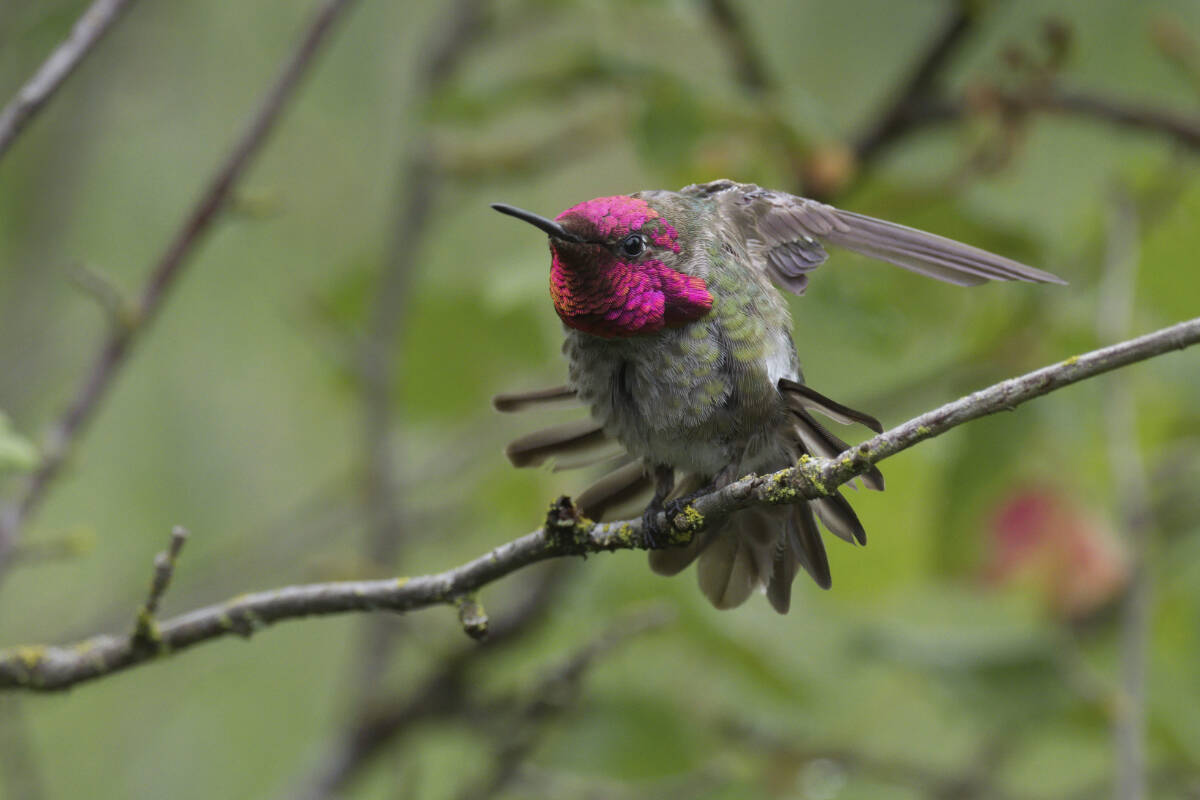As hummingbirds start to consider nesting options, it’s time for those who feed them to think about their part in the process.
The south coast of B.C. is not a natural place for hummingbirds, but over the decades of urbanization, gardens and feeders have lured them north from California and Baja, explains Alison Moran of the Hummingbird Project with the Rocky Point Bird Observatory.
They’re one of the few birds positively impacted by humans, she said.
First noted on Vancouver Island in the 1960s, it took 30 years before people really started to see them, Moran said.
“What we did is provide abundant resources and they took the bait – they just went for it.”
They’re even spotted as far afield as Alaska and Nova Scotia now, but on the south coast of B.C., they’ll hang out all year.
“These birds breed during the winter because that’s a perfect time to breed if you live in California. So they’re starting to set up territories now, but it’s just going to get busier and busier into December,” Moran said.
The birds are making their nesting decisions based on resources, so those who feed them need to commit by mid-November or give them a chance to find other sources – which they will.
If the neighbourhood is riddled with feeders, it’s not a big deal to go away for a holiday. If you’re the sole source, now’s a good time to evaluate your commitment, Moran said.
“If you’re going to take care of them, either do it well or don’t do it at all.”
That means appropriate maintenance as well.
Keep it simple. One part white sugar, four parts water is the best recipe – using only white sugar.
Keep it liquid. While south coast winters are mild, even island feeders need warming at times. Moran purchased a heater to keep hers warm, while a friend created a DIY version. Either way, nectar needs to remain liquid, as freezing impacts concentrations within the feeder.
“It’s important to not let your feeder freeze and not create the super-concentrated syrup,” she says.
In the wild, birds can tolerate slightly higher concentrations of sugar, as long as they have a source of water. In freezing conditions, water for dilution may not be readily available.
RELATED: How to keep the hummingbirds fed during a cold snap
Keep it clean. It is important to clean the feeder and refresh nectar regularly. In the cooler weather, cleaning could be once a week, but in summer should be every two days.
“Choose a feeder that is easy to clean so you can get into the ports and clean all the muck out.”
Moran also suggests simplifying things by making a batch to keep in the fridge and only putting out what will be used.
The volunteer-run Hummingbird Project includes teams that monitor and study migratory, breeding and behavioural patterns. The data offers insight on populations, their health, migratory routes and diet. The team monitors the five hummingbird species found commonly in Canada: Rufous, Anna’s, Calliope, black-chinned and ruby-throated.
Visit rpbo.org/hummingbirds for more tips and information.

